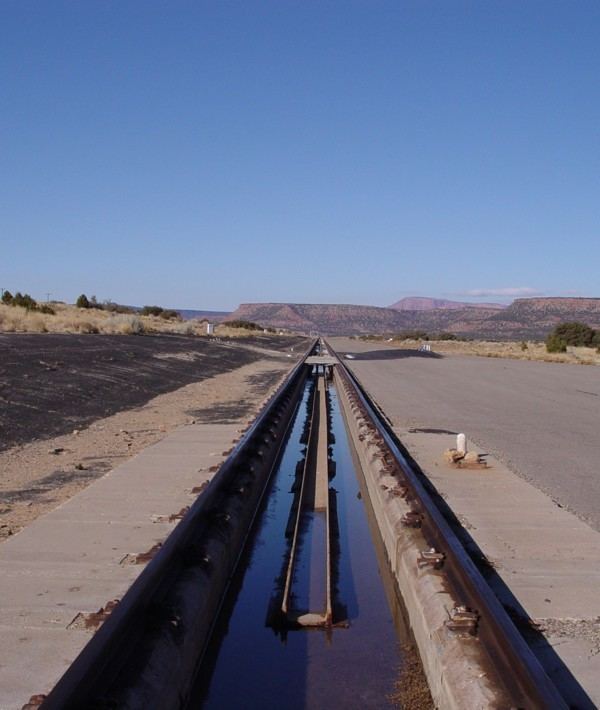 | ||
The Hurricane Supersonic Research Site (HSRS) on Hurricane Mesa was a USAF launch complex with a rocket research track that launched a rocket ejection seat from a supersonic sled. The track's 12,000 ft (3,700 m) "of continuously welded, heavy-duty crane-rails aligned to within plus or minus one-tenth inch tolerance [was] the longest" in the US (cf. the shorter 1954 Holloman Rocket Sled). Coleman Engineering Company was contracted for $2 million in June 1954 and constructed the Supersonic Military Air Research Track (SMART), mechanical arresting gear (water brakes with 34 tons of force), retro rockets, and photographic/telemetering facilities. Coleman was also contracted for operations on November 30, 1955, and achieved a "world land speed record [using] a 9,400-pound sled rocketing down the track at 1,800 miles per hour." The numerous test facilities included a powered comparator for high-speed motion pictures, a 1956 IBM 706 computer, and 1960 Bendix G-15 computer. Control of the site transferred from Indian Springs Air Force Base on November 6, 1957, and from Wright-Patterson AFB to Edwards AFB on March 9, 1962—the base was placed on standby in December 1961, and was closed on June 20, 1963.
The 3,500.78-acre (1,416.72 ha) Formerly Used Defense Site (J08UT0026) initially transferred to Stanley Aviation and was leased to Sacol, Inc. on May 21, 1965. Adjacent to the Hurricane Mesa Airport (37°14′59″N 113°12′31″W), the privately owned Hurricane Mesa Test Facility is owned and managed by the United Technologies Aerospace Systems division of the United Technologies Corporation.
